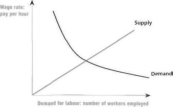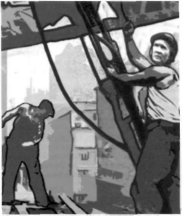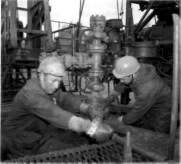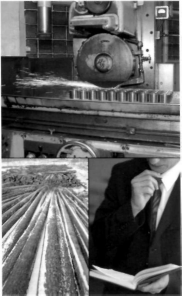ВУЗ: Не указан
Категория: Не указан
Дисциплина: Не указана
Добавлен: 18.10.2024
Просмотров: 260
Скачиваний: 1
Answer this essay question:'What do economists mean by market structure? What kinds of market structure exist? How do different market structures affect consumers?'
Essay about market structure
Use this plan to help you.
PARAGRAPH 1
Introduction.What is market structure?
Useful words and phrases:
compete, competition, market share, control over price
PARAGRAPH 2
Explain perfect and imperfect competition.
Useful words and phrases:
company size, market share, perfect substitutes, perfect information, barriers, access
PARAGRAPH 3
Explain monopolies.
Useful words and phrases:
pure monopolies, natural monopolies, economy of scale, takeover, legal monopolies
PARAGRAPH 4
Say how market structure affects consumers
Useful words and phrases:
price makers and price takers, variety and consumer choice, quality
PARAGRAPH 5
Conclusion.Sum up in a few words what market structure is and how it affects consumers.

Unit
Before you read
Discuss these questions with your partner.
In what situation(s) do you think a worker can ask for a lot of money?
In what situation(s) can an employer pay loss money to workers?
! A Vocabulary
Match the words with the definitions.
take on employees
obey satisfaction or usefulness
utility 1be able to buy
output D follow
compromise amount produced in a certain time
productivity employ more staff
afford both sides give up something
ш order to agree
staff what a company produces

IP Reading 1
M
о
tmigalii и n i T 35
Figure
1: Supply and demand In the labour market

111 main ways tile relationship l>clween employers and workers is similar to tin relationship between consumers and producers: workers offer a service (the labour I hey provide), employers buy that service at a price they can afford (llit wages they pay I As you can see. it's a kind ot marlu i In economics, it's called the hthoitt market.
In any market lor products and sen ices, consumers tt\ to get the maximum utility. .>r satisfaction, from their purchase This is the same in the labour market What do companies want from their purchase of labour- What utility do they get г The answer is increased output. < hitpttt is how much of the product or service l he company produces. If I here is an increasi in demand for their product, they will need to increase output. < >ne way to do (his (but not the only way I is to take on more staff. Another is ю ask stall the\ already have to work more hours In both eases, the company is buying more labour.
.hist like any oilier market, the lalvnir market obeysthe laws of supply and demand The demand is the employers' need lor labour Supply is tin labour workers provide .histlike any other commodity, there is a relationship between pricc and demand. As the price ol labour increases, the demand decreases Youcan sec (his shown in tigure 1.
I lie suppliers in the lal«»tir market are workers. Inst like suppliers in oilier markets. the\ want a
higher price tor greater supply. In oilu r words, as supply of labour increases, they want higher wages. Again. you can see this shown in figure 1. The wage that workers <>et tor their labour is a compromise between what they want and what eompanies will pay. This is the point where the lines cross in figure 1 •
Mowevi i. there e;m hi shuts 111 demand. These shifts ean cause the overall demand lor labour to increase or deerease at any wage rate For example, it there is an increase in the demand t'oi the end product or servicc. there will be an overall increase in demand lor lalx>ur (the demand curve shifts to the right) However, if new technology ean replace workers, then then will be an overall deerease in demand for labour (the demand curve shifts to the left).
()ne more thing which all'eets demand for labour is workers' productiv ity The productivity of a worker is how much they produce in a certain time. For example, imagine that a worker makes ten pencils air hour one day. and only eight pencils an hour the next day. This is a fall in productivity When worker productivity falls, companies P;,> h'ss,(>1' labour. They are also less likely to employ new wor kers
Before you listen
В?
С Listening И)))
What makes workers more or less productive?
Now listen to someone talking about one thing which affects productivity: the law of diminishing returns. Listen and choose the chart А, В or С which best illustrates this law.
nber of workers
Productivity pe
Now read the text again and complete the sentences below in your own words in the space provided.
The labour market is similar to ..
Companies buy labour because they ...
Workers want higher...
When the price of labour rises ...
Number
et worke
Productivity per worker
Number ot workers
>
36 i Л О .. d ? ftOlOIB^l i • f r J
Before you read
Discuss this question with your partner.
What would influence whether you want to work or not? Think about:
wages
-» free tune
-* where job situated
-> health
ff D Vocabulary
Complete each sentence with a word or phrase from the box.

At the weekend everyone needs to relax and from school or work.
Employers important
in the economy.
is what you receive if you are badly
affected by something.
I means replacing one thing
with another.
Most people's time is at the
weekend and m the evenings.
It can be difficult to get the right
between work and free time.
The money you can earn people's
choice of job.
Some economic problems are very
There is no easy solution.
The hourly for this job is seven
pounds an hour.

IS Reading 2
Supply of labour
Why do people work'rTo make money, of course. However, nothing in economics is ever that simple. The economist will ask a iurihcr question- how much are people prepared to work- The answer to this question is much more complex, finding the right balance K-tween work time and leisure time is one of the trade-offswe have to make in life. The balance each person chooses depends on a number of things.
l irst of all. there are natural limits. There are only 24 hours in a day. andwe can't spend all ol" tln-m working. Most people need eight hours sleep. I hat brings the number of hours we can spend on work or leisure down to 16. None ol us are robots, so we all need some time to rest and switch off from work. This also brings down the possible number of working hours.
M i
<■m
....G и
1Л• tu E ' 37
The income effect works like ihis: People's lime is a resource. If they give up that resource for work, they need compensation. This is usually ill the form of a wage /or hours worked. The more eom|vnsation they get lor each hour worked, the less they will need to work People with higher rates of pay (wages) can afford to have more leisure time than people on lower rates of pay
So far. so good. How ever, are |4-ople happy just sitting at home ami enjoying themselv esV It depends on what they'll lose. In other words, it depends on the opjxirtunityoosf of not working. As the hourly rate for work increases, the cost of not working alsoincreases This means that as the wage rate increases, people want to work more hours. This is called tin substitution effect. Hut the substitution effect also has a limit. Eventually, people will not work more hours, no matter how good the compensation is.
Л goodwage rate clearly attracts more workers, and encourages them to work longer hours. However, the strength of this relationship depends on howt las tictin- labour supply is. Sometimes it is difficult for companies to find a certain kind of worker Perhaps there are not many people with the necessary skills ()r perhaps the company is in a place where there are not many available workers. In thesesituations, even if employers double the wage rate, they will only attract a small nunilier of extra w orkers. The laUmr supply isitn lustic.In the opposite situation, when it is easyforcompanies to find workers, the labour supply becomes elastic
38
м
J
t-v
*•<Otidl to t К ' О i> t » Unit 7
Now read the text again and choose the sentence which best summarises each paragraph.
PARAGRAPH 1
People generally spend equal amounts of time on work and leisure. People have to make compromises. People work in order to have leisure time. PARAGRAPH 2
' There are only л limited number of hours available for working. Everyone} works about 16 hours. People can only work up to 24 hours a day. PARAGRAPH 3
You Itave to work more hours to make more money.
Earning a good wage allows you to spend less time working.
Some people get paid in their leisure time. PARAGRAPH 4
If you work more, you earn more If your wage is bad. you will want to work more.
If your wage is good, you will want to work more. PARAGRAPH 5
Sometime* it's hard to attract workers. Sometimes workers don't want more money. Elastic labour markets are того common than inelastic labour markets.
Before you listen
Discuss these questions with your partner.
Why are some jobs paid better than others?
-+ Why do some people get paid more than others for doing the same job?
F Listening H)))
Now listen to someone answering these questions. You will hear four reasons for differences in pay.What are they?
G Speaking
Discuss these questions with your partner.
Do people only work for money? What other motivation is there to work?
Task
Give a two-minute talk on how supply and demand work in the labour market.
First, read the texts again and make notes below on the following.
How is the labour market just like any other market?
0 H Writing
You have seen this job advertised in a newspaper. Write a letter of application for the job.
Required: Summer Camp Team Leader
Wo are looking lor suitably qualified and experienced team loaders for cui summer camps for young children (aged seven to twelve). Children come from all over Europe to oui camps and take part in a variety of outdoor activities (camping, canoeing, climbing, trekking, etc).
Suitable candidates should have proven experience of working with th:s age group and have the necessary skiEs and qualifications.
Semi letters of application to:
Ms Gibson Summer Fun Camps Wayfield Norfolk I in gland
Letter of application
Use these notes to help you.
PARAGRAPH 1
Say why you're writing and where you saw the advertisement.
Useful words and phrases:
Dear Sir Madam. I am writing in response to your advertisement in... I would like to apply foT the post of...
PARAGRAPH 2
Summarise the suitable qualification you have for the job.
Useful words and phrases:
As you can see from my СV ... I am a qualified ... instructor.
hi addition, I hold certificates m... I am a fluent / good speaker of .
PARAGRAPH 3
Summarise the relevant experience you have.
Useful words and phrases:
Furthermore. 1 have the relevant experience you are looking for. For the last five years 1 have ...
Two years ago I was ...
PARAGRAPH 4
Say why you would like the job.
Useful words and phrases:
There are a number of reasons why I would like to ...
firstly, secondly, thirdly, furthermore, what is more, I hope to gain, I enjoy working with ... This will be an opportunity to . .
Say thank you and sign off:
I look forward to hearing from you soon. Yours faithfully, (your full name)
• 39
Mi. " )>■ ... :9t •-t
Pronunciation guide Obey лIxm
Productivity pnxhktiv.ni Utility jtia loti Leisure 'levari Substitution \\b4itiu;|n Encourage ink\inK Canoeing клшипр Furthermore f4xV>m.xii>
Unit
Before you read
Discuss the following with your partner.
-* Look at the photos. Each photo shows
40 м,. , .,.j• , ( it tt
f A Vocabulary
Choose the correct word.
All machines need
so that they keep working well.
Scientists' laboratories are usually full of . for experiments.
When a machine gets very old you need to buy a
maintenance / replacement.
It's to take an umbrella out on a
sunny day.
Plastic and cardboard are used a lot for the around products.
Some people enjoy doing
activities like crosswords and board games.
Wood that hasn't been made into anything yet is called iimbci / crop*.
A is a large building for
storing things.
The things that farmers grow in their fields are called t imii'-r / crops.
An industry that needs many workers is known as л ■intensive industry.
If you don't need furniture or equipment for some time, you can put it into lor.ige / wan hou < .
The price of a product is a i which
influences our decision to buy it
IS Reading 1
Factors of production
The factors of production arc the starting point for all economies. No economy can exist without them. The most basic of the factors is land. When economists talk about land, however, they don't just mean space to build on or fields to grow crops. Land means everything that nature provides and we can use for production. The land factor includes raw materials like coal, metals, oil and timber. It also includes things like water, lish and salt. So. although it seems illogical, land also means the sea!
The second factor is lalxmr. Raw materials will just stay in (lie ground unless people dig them out and do something with them. Similarly, factory machines will sit doing nothing without people to operate them. Labour can mean the physical effort such as lifting, digging and building. This is called manual work. Lalxmr also includes mental work like thinking, writing, communicating and designing. Industries that need many workers working long hours arc called labour intensive industries.However, the quality of labour is as important as the quantity. An educated, skilled and tit workforce is more productive than an uneducated, unskilled and unhealthy one. This characteristic of the labour factor is calledhuman capital.Some countries have large labour forces, but arc poor in human capital because the economy lacks education and health care.
The third factor is capital. Capital includes buildings such as factories for production and warehouses for storage. It also includes the tools and equipment that workers use in the manufacturing process. In heavy industries such as shipbuilding or steel making, capital usually involves big machinery and mechanical equipment. In high-tech industries, on the other hand, capital generally means computers and complex lalx>ratory apparatus. These days, industry tends to be more capital intensive than labour intensive.
When companies make investments, they buy new capital. There arc two types ol investment that companies need to make. The first is to buy new equipment so that they can expand their production. This is called net investment.Net investment is essential for economic grow th. However, equipment gets old and needs repairing or replacing. The money spent on this kind of maintenance is called rejilacement investment.
Land, labour and capital are the three factors of production identified by Adam Smith and the classical economists. However, more recent economists have identified one more factor: enrreprcncurship.This means people like you, with great business ideas that set the economy in motion
0 E Comprehension
Now readthe text again and decide whether these statements are true or false.
Raw materials are the most important factor of production.
The land factor includes all the raw materials that come from the land and the sea.
The most important tiling about the labour factor is the size of the labour force.
In modern economies, more labour is used than capital.
Net investment allows companies to increase their production.
Entrepreneurs are part of the labour factor.
Before you listen
Discuss the following with your partner.
Entrepreneurship is the fourth factor of production. Which tilingsin the hsf below do you think entrepreneurs bring to the economy?
В
С Listening
Before you read 13
What does economics study? 17
What are 18
microeconomics and macroeconomics ? 18
Before you listen 20
Before you read 22
History of economic thought 23
Before you listen 26
Before you read 27
Econometrics 28
Before you listen 29
Before you read 33
The law of demand 34
Before you listen 35
Unit 40
Before you read 40
The traditional economy 40
Before you listen 41
Before you read 43
The market economy 43
Before you listen 44
The planned economy 46
Before you listen 51
Before you read 56
Before you listen 59
Revision Vocabulary Units 1 to 4 61
Before you read 63
Consumer choices 65
Before you listen 75
Before you read 77
Costs and supply 77
Before you listen 78
Unit 80
Before you read 80
Market structure and competition 80
Before you listen 81
Before you read 82
Monopolies 82
Unit 87
Before you read 87
The labour market 87
Before you listen 88
Before you read 89
Supply of labour 89
Before you listen 91
44Unit 93
45Before you read 93
70Factors of production 93
85Before you listen 95
Before you read 99
Division of labour 100
Before you listen 101
Revision Vocabulary Units 5 to 8 104
Before you read 104
Surplus 105
Before you listen 106
Before you read 108
Price discrimination 108
Before you listen 109
Welfare economics 111
Before you listen 112
Before you read 113
Government revenue and spending 113
Before you listen 114
Before you read 116
Wealth, income and inequality 117
Before you listen 119
Before you read 120
Poverty 121
Before you listen 125
Macroeconomics 128
Before you listen 129
Before you read 130
ф D Vocabulary 130
Aggregate demand and aggregate supply 130
BP E Comprehension 132
Before you listen 132
0 F Listening *))) 132
ff G Speaking 133
Task 133
Revision Vocabulary Units 9 to 12 135
Unit 136
Before you read 136
Money 136
^ В Comprehension 137
Before you listen 137
В с Listening Ц))) 137
Before you read 137
0 D Vocabulary 138
Banks 145
В E Comprehension 146
Before you listen 146
F Listening Ц))) 146
G Speaking 147
Unit 148
Before you read 148
ff A Vocabulary 148
Fiscal policy 148
P В Comprehension 149
Before you listen 149
С Listening 4))) 149
Before you read 150
0 D Vocabulary 150
Monetary policy 150
Before you listen 153
rehension 153
Before you read 156
A Vocabulary 156
Interest rates and the money market 156
В Comprehension 157
С Listening H))) 158
Before you read 159
fiJ D Vocabulary 159
Economic shocks 159
Before you listen 162
G Speaking 163
Before you read 164
fif A Vocabulary 164
Inflation 164
Before you listen 166
Before you read 168
ff D Vocabulary 168
Unemployment 168
Before you listen 169
F Listening H))) 169
E Comprehension 169
G Speaking 169
9 H Writing 170
Revision Vocabulary Units 13 to 16 171
Unit 172
Before you read 172
Economic growth 173
9 В Comprehension 175
Before you listen 175
ff С Listening Ц))) 176
Before you read 176
ff D Vocabulary 176
The business cycle 177
fi? E Comprehension 178
Before you listen 178
F Listening И))) 179
H Writing 179
Before you read 180
f A Vocabulary 180
The open economy 180
? В Comprehension 181
Before you listen 182
С Listening 4))) 183

